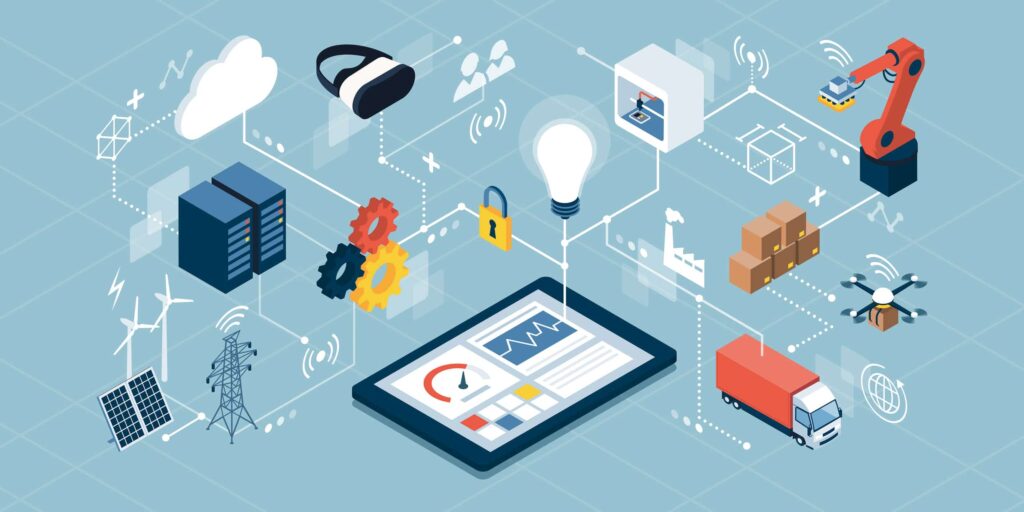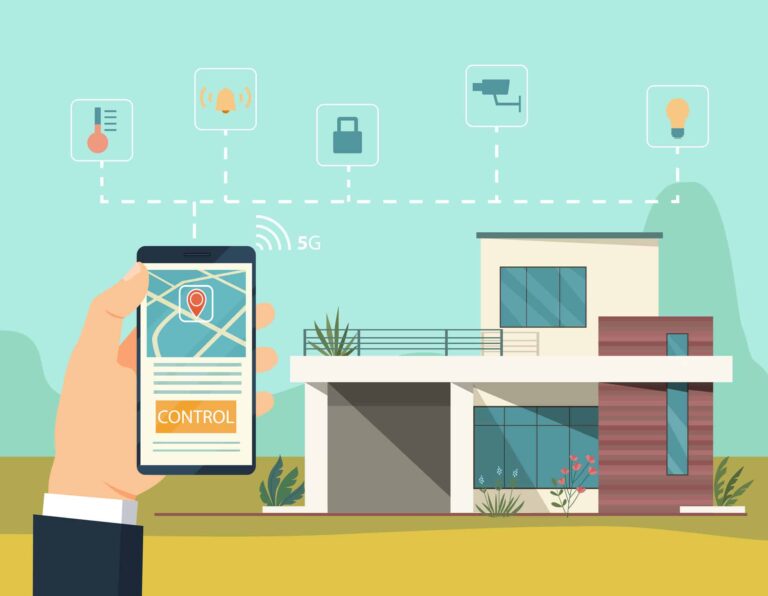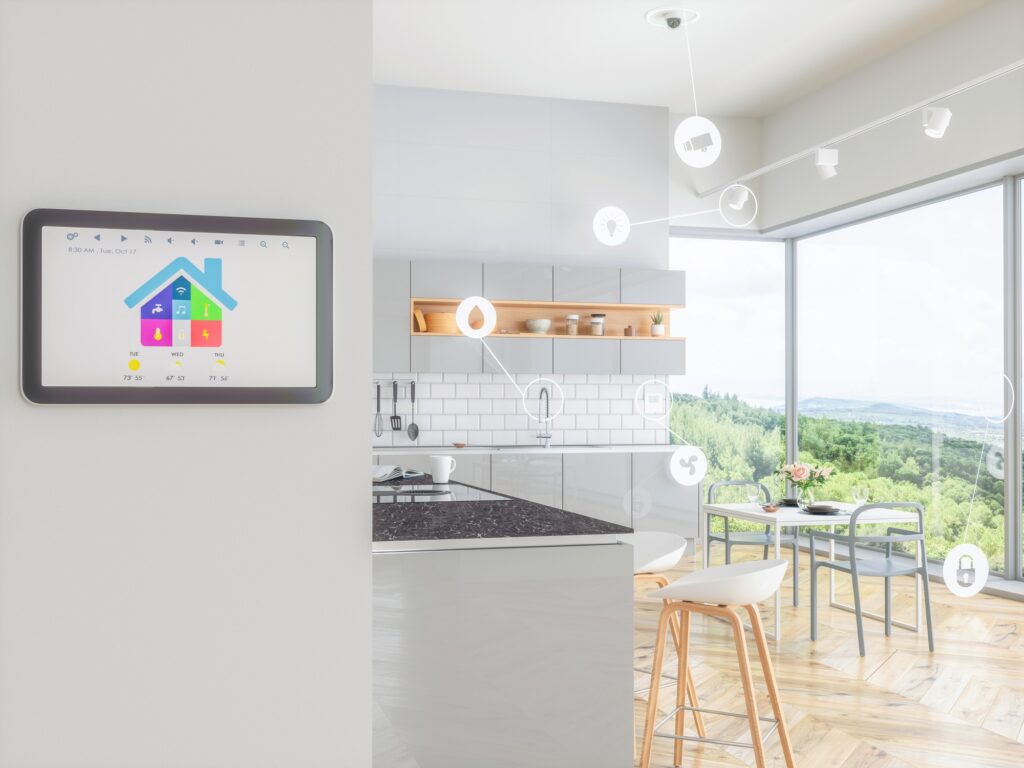
The Internet of Things (IoT) has revolutionized the way we interact with the world around us. IoT devices have permeated every aspect of our lives, from smart homes and wearable devices to industrial machines and city infrastructures. However, as IoT networks expand and become more complex, managing these devices becomes increasingly challenging. This is where IoT device management comes into play.
Many IoT device management companies provide critical services for businesses leveraging the Internet of Things technology. These companies offer platforms that allow businesses to register, organize, monitor, and remotely manage IoT devices at scale.
What is IoT Device Management?
IoT device management refers to the process of administering, monitoring, and maintaining internet-connected devices within an IoT ecosystem. It encompasses a range of tasks, including provisioning and authentication, configuration and control, monitoring and diagnostics, and software updates and maintenance.
Provisioning in IoT Device Management
Provisioning is the initial step in IoT device management. It involves adding a new IoT device like Smart Lights, Smart Hubs etc. to the IoT network and setting it up for operation. This process includes assigning a unique identifier to each IoT device, which allows it to communicate with other devices in the network. The identifier could be a serial number, IP address, or any other unique code that distinguishes one device from another.
During provisioning, the device’s role within the network is also defined. For example, in a smart home environment, a IoT device could be provisioned as a Smart Thermostat, a Smart Lock, or a Smart lighting system. These roles determine how the IoT device communicates with others and what data it collects and shares.
Provisioning also involves setting up the necessary security measures for the IoT device. This could include installing encryption software or setting up firewalls to protect against unauthorized access and data breaches.
Authentication in IoT Device Management
Authentication is another crucial aspect of IoT device management. It verifies a device’s identity before it is granted access to the network. This process is crucial for maintaining the security and integrity of the IoT ecosystem.
In most cases, authentication involves verifying the device’s unique identifier assigned during provisioning. This could involve checking the device’s serial number or IP address against a database of authorized devices.
Authentication can also involve more complex processes, such as two-factor authentication or biometric verification. For instance, a device might require a password and a fingerprint scan to verify its identity.
Authentication serves several purposes in IoT device management. First, it prevents unauthorized devices from accessing the network, which helps protect against cyberattacks and data breaches. Second, it ensures that each device is functioning as intended and not interfering with other devices’ operations. Finally, authentication provides a way to track and monitor each device’s activity, which can be useful for troubleshooting and performance optimization.
Configuration in IoT Device Management
Configuration is an essential part of setting up any IoT device. It involves defining each device’s settings according to its intended function within the network. For instance, in a smart home setup, a thermostat may need to be configured to communicate with a specific heating system, while a security camera might need to be set up to record at certain times or when it detects movement.
Parameters such as communication protocols, data transmission frequencies, and power settings are defined during the configuration process. The configuration also includes setting up the necessary security measures for each device, ranging from simple password protection to sophisticated encryption techniques.
It’s worth noting that configuration isn’t a one-time process. As the device’s operating environment changes or software updates are released, devices may need to be reconfigured to maintain optimal performance or incorporate new features.
Control in IoT Device Management

Once devices have been properly configured, the next step in IoT device management is control. This involves remotely managing the functions and operations of the IoT devices. Depending on the nature of the device, control can encompass a wide range of functions, such as turning a device on or off, adjusting its settings, or even updating its software.
IoT devices can be controlled remotely via a centralized management platform. This platform allows administrators to monitor the status of each device, send commands, and receive alerts if any issues arise. Remote control capabilities are particularly beneficial in large-scale IoT deployments where manual control would be impractical or impossible.
Control is about more than managing the day-to-day operations of IoT devices. It also involves managing the data that these devices produce. This could involve storing, analyzing, and interpreting the data to gain insights into the device’s operation and performance.
Monitoring in IoT Device Management

Monitoring is an ongoing process in IoT device management. It involves continuously tracking each IoT device’s performance, connectivity, and health status. This could include measuring parameters like signal strength, battery level, data transmission rate, etc.
Monitoring not only helps to ensure that IoT devices are functioning correctly but also enables the identification of potential issues before they become significant problems. For example, if a IoT device’s battery level drops faster than expected, it could indicate a problem that must be addressed.
Moreover, monitoring can provide valuable insights into patterns and trends in device usage. This data can help organizations optimize their IoT deployments, improving efficiency and effectiveness. For instance, monitoring data could reveal that certain IoT devices are under-utilized and could be better deployed elsewhere.
Diagnostics in IoT Device Management
While monitoring provides a real-time snapshot of each device’s status, diagnostics further investigate any identified issues. This process involves troubleshooting problems and determining the most effective solutions.
Diagnostics can involve a range of activities, from simple checks like restarting a IoT device or checking its connections to more complex tasks like analyzing log files or running diagnostic tests. The goal is to identify the root cause of the problem and implement a solution that resolves the issue and prevents it from recurring.
In complex IoT networks, automated diagnostic tools can be particularly useful. These tools can quickly analyze large volumes of data, identify patterns or anomalies, and suggest possible solutions. This can significantly speed up the diagnostic process and reduce downtime.
What is IoT Device Management Platforms?
An IoT device management platform is a specialized software or service that provides a centralized system for managing connected devices. These platforms are crucial in the Internet of Things (IoT) ecosystem, as they allow for efficient monitoring, updating, troubleshooting, and operation of IoT devices at scale.
IoT device management platform follows industry standards and protocols to enable smooth integration with other IoT systems and components, making interoperability crucial. User authentication and access control techniques protect sensitive device management operations, guaranteeing secure access to the platform.
Scalability is handled to effectively handle provisioning, monitoring, and management responsibilities while accommodating the increasing number of IoT devices inside IoT networks. These systems’ reporting and analytics tools provide insightful information about device performance and usage trends, enabling data-driven decision-making.
An IoT device management platform is a comprehensive solution that ensures the smooth operation of IoT devices. It simplifies the management of a vast array of devices, ensuring they are secure, up-to-date, and performing optimally. Examples of such platforms include AWS IoT Core, Google Cloud IoT Core, Microsoft Azure IoT Suite, and IBM Watson IoT Platform. These platforms cater to the varying needs of businesses and their specific IoT deployments, providing customized solutions for effective device management.
IoT Device Management Platforms are essential for streamlining connected device management tasks and enhancing the security, effectiveness, and scalability of IoT installations.
The Importance of IoT Device Management
It is impossible to exaggerate the significance of Internet of Things (IoT) device management because it is essential to IoT deployments’ effectiveness, security, and durability. Effective administration is becoming increasingly important as the number of connected devices keeps growing for various reasons.
First and foremost, the ecosystem’s overall security depends on IoT device management. The risk of security breaches increases when several devices are continuously sharing data and connecting. IoT device management ensures that all devices are authenticated before they’re allowed to connect to the network. IoT Device management also includes security features like encryption, secure boot procedures, and routine upgrades to guard against security flaws and unwanted access, protecting private data and ensuring system integrity.
Second, effective device management is critical to the scalability of IoT implementations. The ability to provide, manage, and monitor a large number of devices becomes more complex as enterprises grow their IoT networks. Effective device management makes a smooth onboarding process, easier configuration updates, and seamless scalability possible, improving the IoT ecosystem’s overall performance.
Thirdly, IoT device management is essential to preserving devices’ long-term functionality and health. Administrators can quickly detect and resolve problems with continuous monitoring and diagnostics, which minimizes downtime and improves IoT device reliability. Furthermore, the capacity to remotely manage and program activities makes troubleshooting more effective and reduces the need for hands-on assistance.
Moreover, firmware and software upgrades can be implemented with the help of IoT device management. Fixing problems, enhancing functionality, and repairing security flaws depends on this. Frequent updates help keep devices current and increase the IoT infrastructure’s overall resilience.
Effective IoT device management satisfies legal and regulatory needs and offers these operational benefits. It guarantees responsible data management of IoT device data while upholding security and privacy norms. This is especially crucial as data protection laws change and become stricter.
Last but not least, end-of-life management is a crucial component of IoT device management, offering a systematic way to decommission gadgets that have reached the end of their lifespan. Ensuring that retired devices are disposed of properly and following data erasure rules helps to prevent potential security problems and promote environmental sustainability.
To sum up, IoT device management is essential to IoT deployment success. It tackles the issues brought on by the ever-expanding and dynamic world of connected devices while improving security, scalability, performance, and compliance. Robust device management practices will be necessary to fully realize the promise of these networked devices as IoT continues to revolutionize sectors.
How IoT Device Management Works?
online. This platform provides a unified interface for all device management tasks, from provisioning and authentication to monitoring and updates.
Here’s how the process works:
1. Device Provisioning and Authentication: When a new IoT device is added to the network, it’s registered with the device management platform. The platform assigns it a unique identifier and credentials to authenticate itself when connecting to the network.
Strong security protocols, such as secure boot procedures, data encryption, and device authentication, are used to guard against weaknesses and unauthorized access.
2. Configuration and Control: Once authenticated, the IoT device can be configured through the device management platform. This could involve setting up data transmission schedules, defining alarm thresholds, or other configuration tasks. The platform can also send commands to the device to control its operation.
3. Monitoring and Diagnostics: The device management platform continuously collects data from the devices about their status and performance. If any issues are detected, the platform can alert operators or initiate diagnostic procedures to identify and resolve the problem.
IoT device management platform’s reporting features and analytics provide insightful information into device performance, usage patterns, and areas for improvement, facilitating data-driven decision-making to optimize the overall efficiency of the IoT environment.
4. Software Updates and Maintenance: When a software update is available, the device management platform can distribute the update to all relevant devices. The platform can also carry out routine maintenance tasks, such as resetting IoT devices, clearing memory, or other tasks to keep the devices running smoothly.
IoT Device Management systems help decommission devices when they end their useful lives by safely erasing data and offering advice on switching to newer models.
Future of IoT Device Management
The market for IoT device management platforms is growing rapidly. According to Future Market Insights, the IoT device management platform market size is anticipated to total US$ 4.4 billion in 2022, with sales expected to grow at a 24.4% CAGR.
This growth is propelled by IoT technology’s burgeoning prominence across various industries. Today, device lifecycle management enables many sectors to transition into ‘smart’ ecosystems, like smart energy.
Moreover, the number of IoT devices will increase exponentially in the coming years. IoT Analytics predicts that there will be more than 27 billion devices online by 2025. Similarly, Zipit Wireless anticipates that the number of IoT devices will exceed 24 billion by 2030. This surge in IoT devices will necessitate more robust and efficient device management platforms.
An important trend is the integration of AI and Machine Learning technologies into IoT device management. These technologies can help automate the monitoring and maintenance of devices, predict potential issues before they occur, and optimize device performance.
Furthermore, the advent of 5G technology will also impact IoT device management. With faster data speeds and lower latency, 5G will enable real-time monitoring and control of devices, enhancing the efficiency of IoT device management.
Conclusion
The effective implementation and functioning of Internet of Things (IoT) ecosystems depend heavily on IoT Device Management. IoT Device Management solutions offer an extensive range of tools and processes that simplify the whole lifespan of connected devices. These solutions provide centralized control and efficiency for everything from onboarding and secure connection establishment to continuous monitoring, security implementation, and end-of-life management.
IoT Device Management improves IoT deployments’ scalability, security, and performance by enabling remote control, automation, and update deployment. Respecting interoperability standards guarantees smooth integration with various components and devices, promoting an integrated and networked Internet of Things ecosystem.
Furthermore, the focus on security features like encryption, secure boot, and authentication addresses the mounting worries about unauthorized access and vulnerabilities in IoT devices. The platform’s capacity to properly manage data, adhere to privacy laws, and offer insightful reports and analytics adds to an all-encompassing strategy for managing IoT devices.
Robust IoT Device Management is becoming increasingly important as businesses use IoT technology to revolutionize sectors and boost operational efficiency. Realizing the Internet of Things’ full potential makes managing a wide variety of connected devices easier and guarantees the dependability, security, and scalability of IoT deployments.

